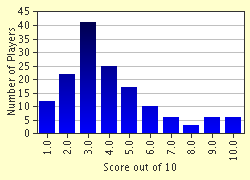Quiz Answer Key and Fun Facts
1. According to a story by Socrates, who was the Egyptian God that invented writing?
2. Which of these has the first recorded writings?
3. What was the name of the first man to draw (not decipher) accurately the cuneiform inscriptions at Persepolis?
4. It is well known that that credit for for the full decipherment of Egyptian hieroglyphs goes to Jean-Francois Champollion. But what was the name of the Englishman who sent Champollion a copy of a bilingual obelisk inscription taken from the Philae Obelisk in January 1882 thus assisting his work on decipherment?
5. Excavations at the ancient city of Uruk (in modern day Iraq) revealed clay tablets dating from around 3300 BC. These were inscribed with an early form of writing. What is the name of the form of writing dating from this period at Uruk?
6. Who coined the term 'Cuneiform'?
7. Elamite cuneiform, though distinct, is a regional variant of which other well known form of cuneiform?
8. How many letters does the Elder Futhark Runic alphabet contain?
9. The Babylonians were the first to subdivide a circle into divisions of 360 degrees. They also gave us 1 hour = sixty minutes and 1 minute = 60 seconds system which we still use to this day. What is this system called?
10. Which Korean king invented an alphabet of 28 letters?
Source: Author
trojan11
This quiz was reviewed by FunTrivia editor
bloomsby before going online.
Any errors found in FunTrivia content are routinely corrected through our feedback system.

